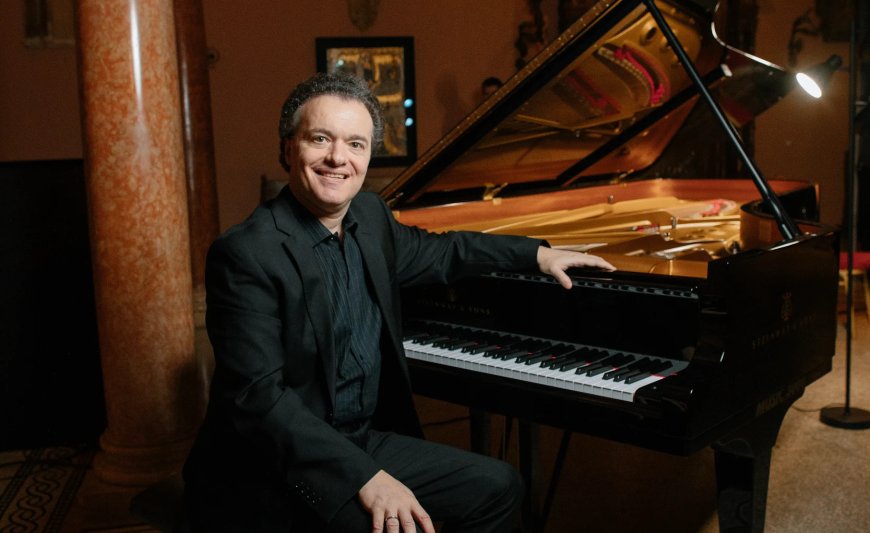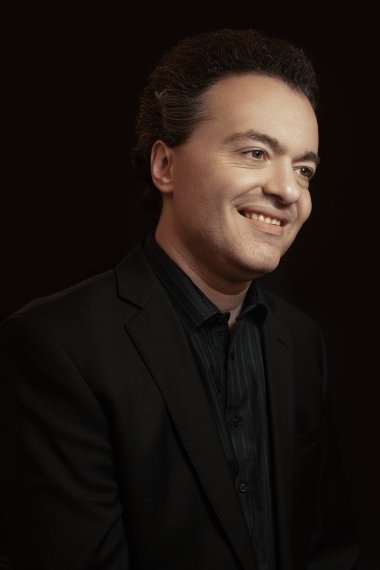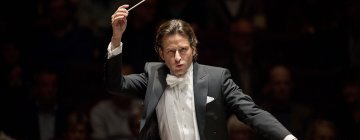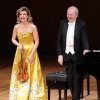
It took pianist Evgeny Kissin much of the first half of his recital to fully hit his stride. But when he did, with a dynamic, expansive performance of Frédéric Chopin’s Scherzo No. 4, the packed audience at Davies Symphony Hall got what they paid for and then some.
In concerts around the world and on recordings, Kissin has established himself as a justly celebrated Chopin interpreter. On Sunday, April 20, with both this piece and an electrifying encore of the composer’s Scherzo No. 2, he made his case afresh in a solo program presented as part of the San Francisco Symphony’s Great Performers Series.
From the early emphatic but spry attacks in the Scherzo No. 4, the pianist was simultaneously in command of and responsive to the work’s technical demands and protean temperaments. Torrents of chords poured forth, like clear water over a riverbed studded with formidable rocks. Kissin summoned musing stillness and elegant poise, one passage set off against another in high yet structurally sound contrast. A tempestuous finish brought the first portion of the evening to a pulse-quickening close.

While relatively undemonstrative at the keyboard, his back hunched in focused concentration, Kissin, 53, plays with a certain theatrical quality. Tempos can be driven, almost relentless. Accents land with full impact. He gets a big, at times brash sound out of the instrument.
The results can be thrilling, as they were in the first of two Chopin Nocturnes — Op. 27, No. 1 — in which Kissin made the shifts from minor to major and back seem like a high-stakes venture across harmonically contested ground. By contrast, the Nocturne that followed — Op. 32, No. 2 — turned somewhat perfunctory in the middle, despite the music’s brooding opening measures and lyrical close.
The recital began with J.S. Bach’s Keyboard Partita No. 2, BWV 826, in a performance that proved rigorous and disciplined to a fault. Playing the piece’s six movements with the slightest pause between them and at a largely unvarying dynamic level, Kissin made the piano seem like some modern, inflexible version of a harpsichord. Only with the perkily scampering Rondeau and a spirited closing Capriccio did this Bach begin to breathe and dance.
The second portion of the evening was devoted to Dmitri Shostakovich, on the 50th anniversary of the Soviet composer’s death. Like Shostakovich, the Russian-born Kissin has had his political differences with the leaders of his homeland, making no secret in recent interviews of his disdain for Vladimir Putin’s ongoing invasion of Ukraine.
Whether such matters had anything to do with his interpretations, the pianist seemed vividly attuned to Shostakovich’s antic, dark-hued exuberance, first in the composer’s Sonata No. 2 and then in a pair of Preludes and Fugues. The fact that Kissin donned reading glasses and required a page-turner sapped no spontaneity.
He launched into the terrific, novelistically rich terrain of the 1943 Sonata with caustic glee. Mock-military flourishes gave way to an unstable melody that kept descending, cross-handed, into the depths of the piano’s bass register. The spare Largo was quietly wrenching, with an air of mournful consolation near the end. A larky little folk tune, reworked and refracted rhythmically and harmonically through the final movement, became, in Kissin’s probing account, a kind of excavation of memory itself.
The pianist made a small, choice feast of the Preludes and Fugues, with a capering melody here, enlivening offbeat accents there, and passages of grave solemnity. Composed in tribute to Bach, Shostakovich’s cycle ends with the raveling clarity and mounting exaltation of the final dyad in D minor. Kissin rendered this selection with steady authority and conviction.
Chopin was featured in the encores, anchored by a propulsive, witty, thunderous, utterly winning performance of the Scherzo No. 2. Here, Kissin unfurled the most overtly expressive playing of the night. Then he bid farewell with a wistful C-sharp-Minor Waltz, its final ascendant run flickering away like smoke from a snuffed candle.
This story was first published in Datebook in partnership with the San Francisco Chronicle.




